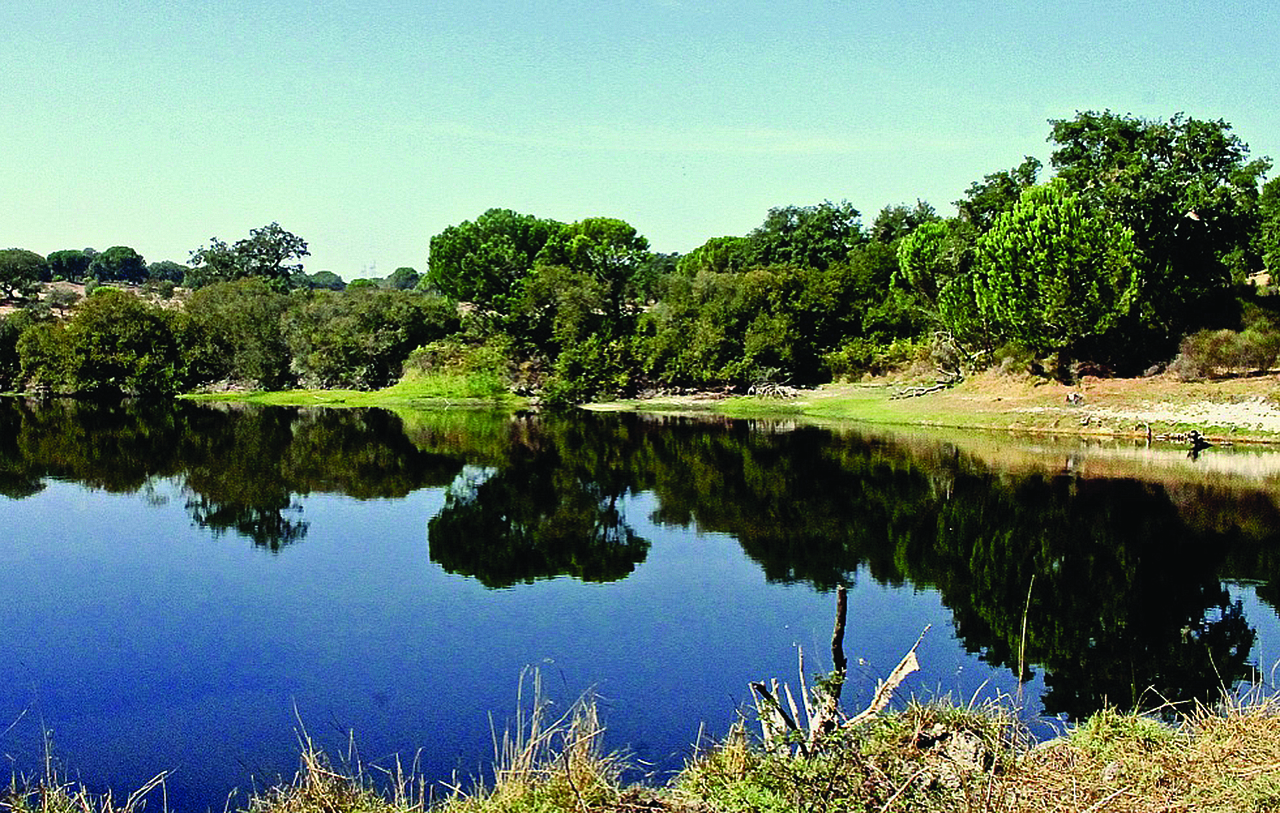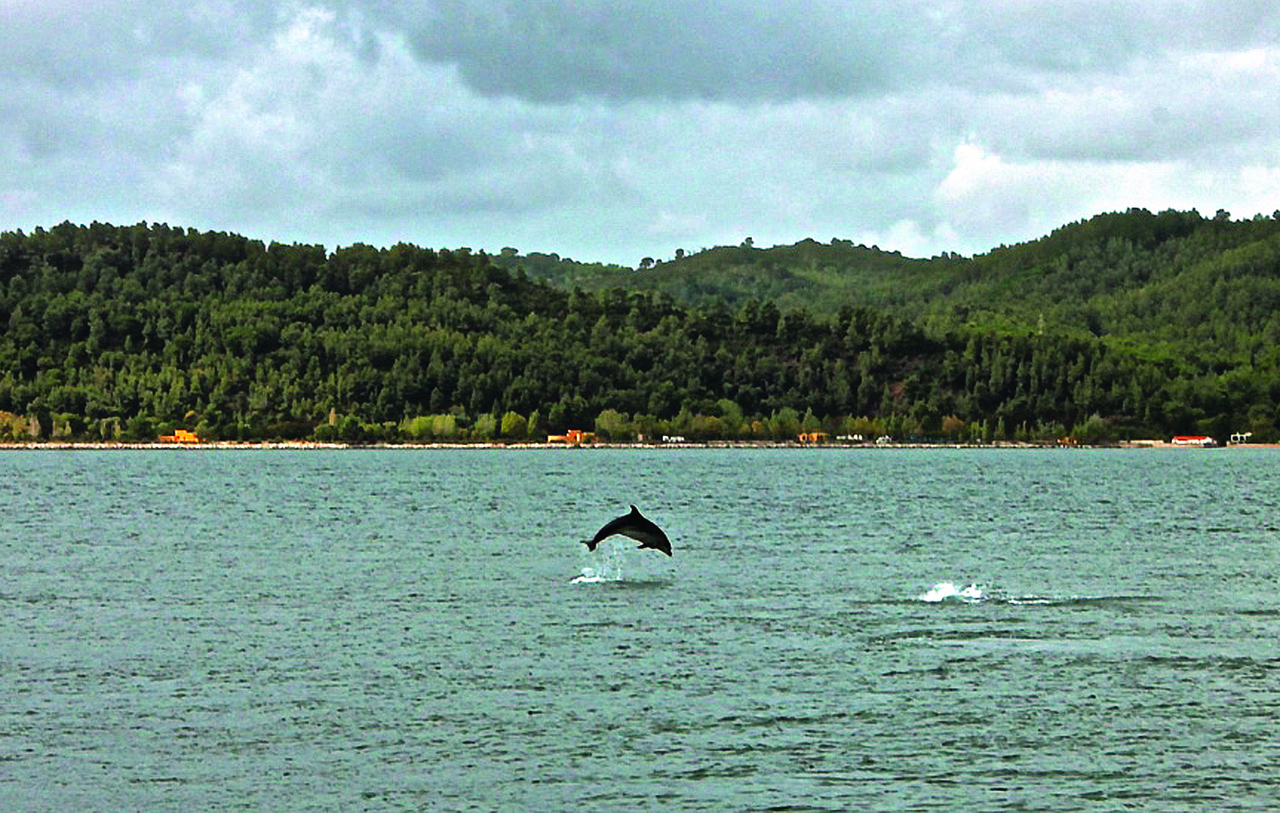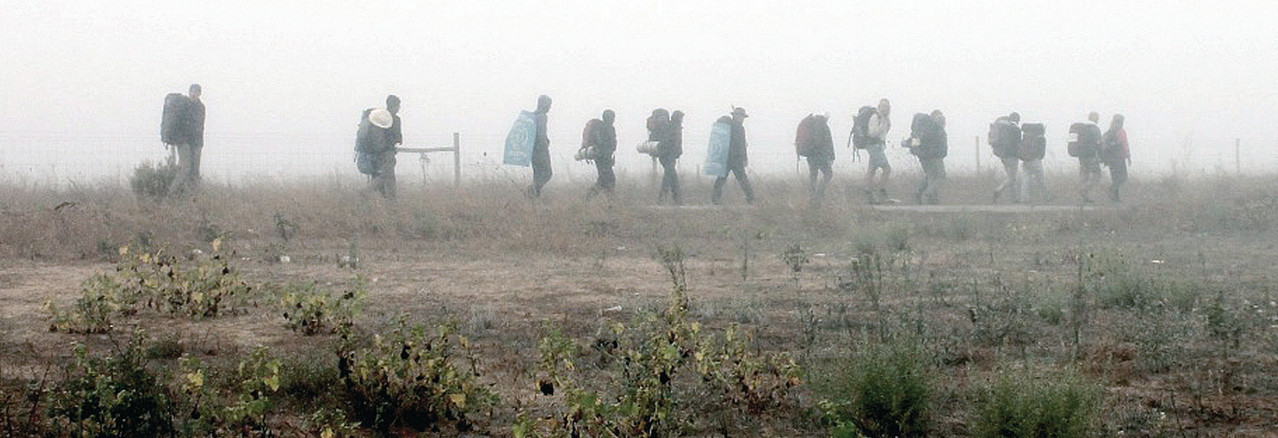It was a Thursday in January when I saw a mayor of an Alentejo village crying for the first time. The head of the civil parish is an experienced man, a skilled tradesman, and in office for many years. But now he’s at a loss. Since early last summer, the boreholes in the village have been empty. Like other neighbouring parishes, his village gets its water delivered by truck from the Monte da Rocha dam on the river Sado. But it’s empty; even last winter it was only 23% full. This means that the quality isn’t as good either. For months, the water in households in his village has been brown and cloudy. If there’s no significant rain, no one knows how the villagers will get through the year. And rice growing, which had already been halved last year, will presumably have to be stopped completely. “And some people in the village still think they can just keep living normally, washing their cars and watering their lawns,” the mayor complains. And I think: “What times are these we are living in when it’s just tears that flow into the river?”
The Sado. Its name alone makes you think of “saudade”, a feeling of melancholy and longing for the past. It was once a powerful river with ships that moved trade, wealth and information between the regions of the interior and the big wide world. Fine old buildings in Setúbal and Alcácer do Sal still bear witness to that. It was known as the Nile of Portugal owing to its extensive watershed and many tributaries. It is also the only river in the Alentejo that flows from south to north. And the final 20 kilometres of the Sado are still a natural spectacle: the course of the river where the waters of the sea and the river combine is majestic. Reed beds and marshland are the typical landscape of the Estuário do Sado nature reserve, huge flocks of birds and even dolphins accompany the river, before it flows into the sea in a great bay near Setúbal, in the wonderful Serra da Arrábida natural park. But there’s another similarity with the Nile: just like the Egyptian river, the water level of the Sado is dropping dramatically. It is nowadays the driest river in Portugal and, in its upper reaches, is nothing more than a rivulet filled with algae that no longer feeds the adjacent gardens and fields, and some of the tributaries disappear completely during the summer. Many villages and estates are becoming depopulated; once extensive estates have fallen into decay. Where there was once a flourishing and diverse landscape, there are nowadays ruins and land is lying fallow; there are monocultures of pine and eucalyptus, a falling water table, dried-up wells and forest fires in the summer.

How could this happen? One answer can be seen on the map: all nine tributaries of the Sado are dammed; there are a total of 13 dams in the watershed. One of these is the Campilhas dam in the upper Sado. In addition to a small power station, its water is principally used for intensive farming, as the person in charge of the users’ cooperative, the “Associação de Regantes e Beneficiários de Campilhas e Alto Sado”, explains to me during my visit. The water from the upper Sado enables tomatoes, maize, irrigated olives and rice to be cultivated – all of them water-intensive crops. The tomatoes are intended for export, and even travel as far as China. That is precisely the big mistake in the system, according to the hydraulic engineer Bernd Müller from the municipality of Odemira: “The fruits that are exported are Sado water in a different form, which will later be lacking from our river system. If no water was removed from the catchment area and if the rain was allowed to seep into the ground where it falls, the groundwater level would rise – and we would have enough water in the region to provide for humans and animals and to produce everything they need, even in years when there is little rain.”
There are more and more critics of conventional water management worldwide. For them, the concentration of water in reservoirs and its transport to other water catchment areas belong to a way of thinking and planning that has long been superseded. But it is precisely this way of thinking that characterises the supply of water to the villages in southern Portugal. In September 2009, the municipalities of the Alentejo handed responsibility for supplying water to the civil parishes to the semi-private company Águas Públicas do Alentejo (AgdA). AgdA’s strategy is to switch the supply of drinking water to the villages completely to the reservoirs. Since that decision was made, there has been no more investment in maintaining and checking the quality of the local boreholes. All the water fountains in the parishes have been labelled “water quality not tested”. Even parishes like Colos, which have rich reserves of high quality groundwater and can still provide for themselves perfectly, even in the height of summer, will be supplied at great cost from the Monte da Rocha dam. Because, once the supply channel is ready, the more parishes that use it and pay for it, the quicker it will pay for itself. The local people were not consulted about it and were presented with a fait accompli.
That is what concerns the advocates of the new water paradigm. “Instead of more and more centralisation, the opposite would be better: to make the civil parishes responsible for water supplies and to invest in natural, decentralised water management,” Müller told ECO123. In his view, the parishes would be well advised to channel the rainwater in a decentralised manner into the ground via retention ponds and ditches, to reforest large areas with mixed species and to promote the cultivation of crops that are adapted to the region and its water resources. These would be sunflowers rather than maize, and traditional rather than irrigated olive growing.
Müller: “Experience all over the world has shown that the water table rises again with these simple, cost-effective measures, and the boreholes won’t have been pumped dry by the early summer.” He added that one thing had to be stressed: “We don’t live in a dry region. Average annual rainfall even in the Alentejo is not much below that in Berlin. There is enough rain, but it mainly falls during a single season, and we must learn to handle it intelligently.”
Could the current drought offer an opportunity for a rethink? At the moment, it doesn’t look that way, yet. Given the low water levels in the reservoirs, AgdA has launched a survey among landowners in the whole catchment area in order to register boreholes and supply the parishes in a decentralised manner after all, but this is only a temporary solution. Longer-term planning for water supplies is about even more centralisation. Although transporting water from one river system to the next is viewed worldwide as an ecological sin, in an emergency such precepts are not adhered to. What this means in concrete terms is that, when the Monte da Rocha and Roxo dams are empty, water will be pumped over from the big Alqueva dam to make up for it. The plans for this have been lying in drawers for decades, and the supply channels have been prepared step by step in the last ten years. It’s almost as if people have been waiting for this distress call from the Sado basin.
But Alqueva water is not only more expensive than the Sado water, it is also of lower quality. The Guadiana rises in Spain and feeds the biggest artificial lake in Europe; it already comes from a region with intensive agro-industry with the corresponding use of chemicals, and it is heavily contaminated. Seventeen years ago, thousands of environmentalists took to the streets in protest against the construction of the Alqueva dam. But the lobby in favour turned out to be stronger and the “Alqueva System” is apparently to come into force to its full extent and in the end, shape the entire Alentejo. In the dam’s catchment area itself, small-scale farming has been almost entirely displaced by highly specialised agro-businesses that use Alqueva water, agro-chemicals and cheap labour from the Far East to make a short-term profit – with all the social and ecological misery that can already be felt in the district.
Is this system now to be implemented in the whole Sado catchment area? Even if that may have been the plan from the outset, it will not succeed. The Spanish agro-industry is also demanding more water, and so Spain already restricted the water in its rivers that flow into Portugal last year. We can see from this example that a centralised solution can never be sustainable. Only decentralised solutions will facilitate life and production tomorrow too – both in the Sado region and in all the rivers in the world.

Happy river
In the autumn, a group of 20 people decided to get to know the river system of the Sado, and went on a ten-day journey from Tamera to the mouth of the Sado. They walked along canals, reservoirs and the dried-up beds of streams and riverbanks, waded through mud, rice fields and knee-deep water. They slept in gymnasia, town halls, and community centres, and spoke to mayors, farmers, housewives and managers. They witnessed destruction – but again and again they witnessed nature hanging in there despite everything. They also witnessed people who are steering clear of globalisation, and are defending themselves in their own particular way. Thus, there were old people in all the villages who simply refuse to drink the water from their taps, and hence from the dams. Instead, they care for the old drinking fountains, ignore the signs saying “water quality not tested” and use bottles and other containers to fetch the spring water, which simply tastes better. The river walkers also met young people in many places, in some cases very well educated, who come from the cities or from other countries and have breathed new life into disused farms, who are planting trees, creating gardens using permaculture and – sometimes in the middle of intensive farming – adopt alternatives, such as organic rice growing. In this way, meeting places come into being, where people come together and look beyond their own backyard – at viewpoints and alternatives in the region.

Taking the Sado as an example, the landscape planner Duarte Sobral from Odemira explained the ideal interplay between the different ecological sections in the course of a river: in the upper reaches, mixed forests flourish; this is the source area where there is as little intervention as possible in nature. This is followed by extensive production with fruit trees and woodland pasture – this is the ideal area for the so-called “montado”. In the middle course of the river, with its fertile plains, agricultural production becomes more intensive. The alluvial land allows for productive cultivation and the provision of food for the wider region, but still with mixed species and with lots of trees: trees with deep roots specifically in the middle course of a river hold the groundwater and make it available for the whole ecosystem. And in the wetland areas near the mouth of the river, there is salt production, fisheries and the gathering of particular plants and shellfish. In this way, all the zones in the course of a river work together in the best possible way. There is a successful combination of conservation, care, culture and production.
Couldn’t people create such a river-alliance through friendship, contact and collaboration and complement each other accordingly in cultivation, production and trade? How good that would be for the river – and for all its animal and human residents! It must once have been a bit like that. In what were then the wealthy towns of Setúbal and Alcácer do Sal, products from the interior and from the sea were traded in large quantities. The Sado formed a living artery that linked the sea and the countryside – with water, goods and information.
It is a cool day when, after many kilometres, the 20 hikers board the ferry in Setúbal, which will carry them to the final place on their walk, to the beach at Tróia, between the river and the sea. Just as they are sitting on the bank exchanging their final words, the dolphins arrive! Dozens of bottle-nosed dolphins swim right up to them, and then out again to the open sea. Many of them leap out of the water one more time as if in greeting. The long-distance walkers see this as a farewell and a message: however far the destruction of the planet has advanced, we are still here! If people cooperate with each other, those living on the land and those living on the water, the healing of an ecosystem is still possible.
 Eco123 Revista da Economia e Ecologia
Eco123 Revista da Economia e Ecologia

